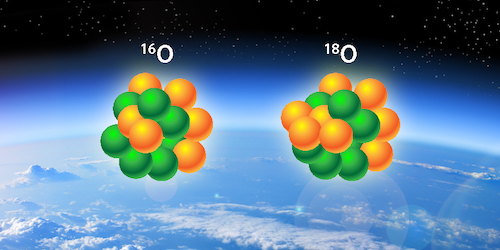Tracking Isotopes in the Upper Atmosphere
Earth’s atmosphere carries “fingerprints” of biological activity. One fingerprint is an elevated concentration of oxygen-18 (18O) relative to the main oxygen isotope (16O), a consequence of isotope-dependent effects in photosynthesis, respiration, and other biochemical processes. Researchers have previously measured 18O abundances in atmospheric layers below 60 km, but their values higher up remained unknown. Now Helmut Wiesemeyer of the Max Planck Institute for Radio Astronomy, Germany, and colleagues have done just that [1]. Their measuring approach could shed light on important questions in atmospheric physics, using 18O to probe, for instance, how global changes in the composition of lower atmospheric layers affect upper layers.
Isotopic composition is typically characterized by measuring air samples captured by weather balloons or by suborbital rockets. These tools allow researchers to probe atmospheric layers as high as 60 km. To extend that height—in this case to about 200 km—the team turned to a precision spectroscopy method that detects the presence of isotopes in the atmosphere via the transmission of light from space.
Exploiting the detectors aboard the airborne Stratospheric Observatory for Infrared Astronomy (SOFIA), which stopped flying in September 2022, Wiesemeyer and colleagues studied infrared light coming from the Moon. In the spectrum, they observed two narrow “dips” due to the absorption of light by oxygen isotopes. By comparing the dips’ shapes, which are isotope dependent, the team estimated the ratio of 16O to 18O at altitudes from 50 to 200 km.
Wiesemeyer says that isotope-ratio measurements of the upper atmosphere could lead to a new definition of the boundary between the atmosphere of a life-bearing planet and outer space. For aerospace engineers, that boundary lies where atmospheric drag ceases. But a more relevant choice for astrobiologists, he says, may be the altitude where isotopic concentrations stop being dominated by a planet’s biological activity.
–Matteo Rini
Matteo Rini is the Editor of Physics Magazine.
References
- H. Wiesemeyer et al., “First detection of the atomic 18O isotope in the mesosphere and lower thermosphere of Earth,” Phys. Rev. Res. 5, 013072 (2023).




